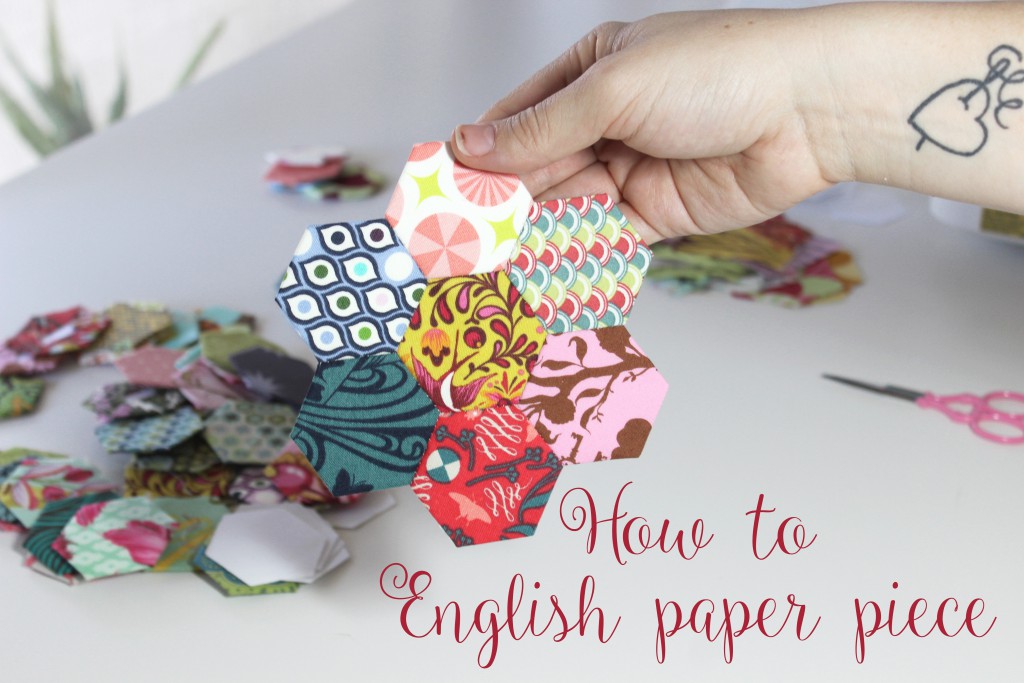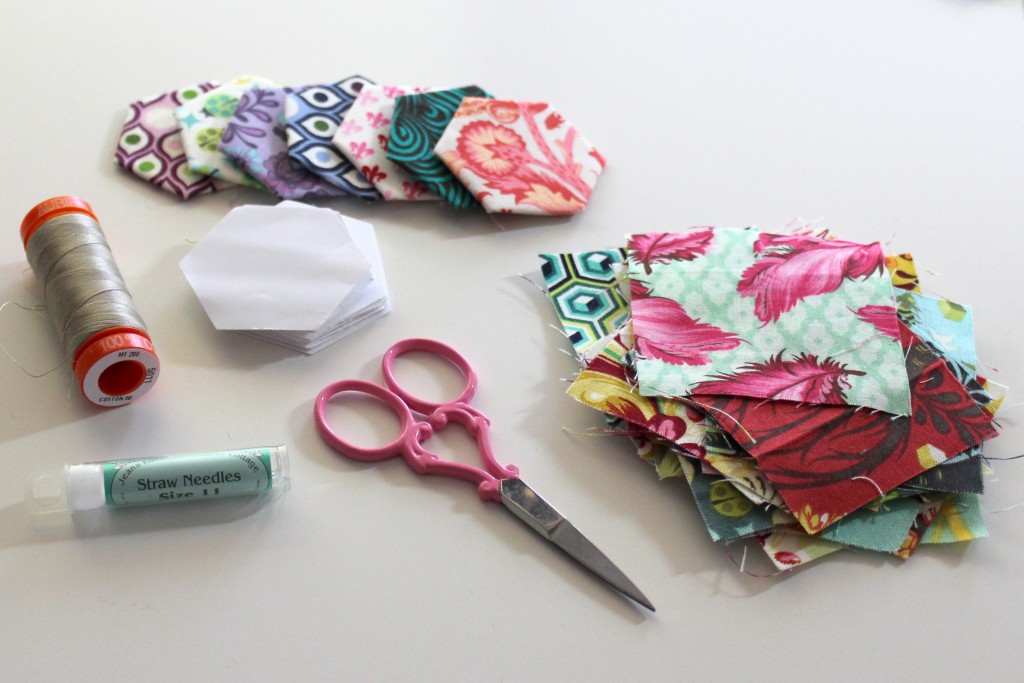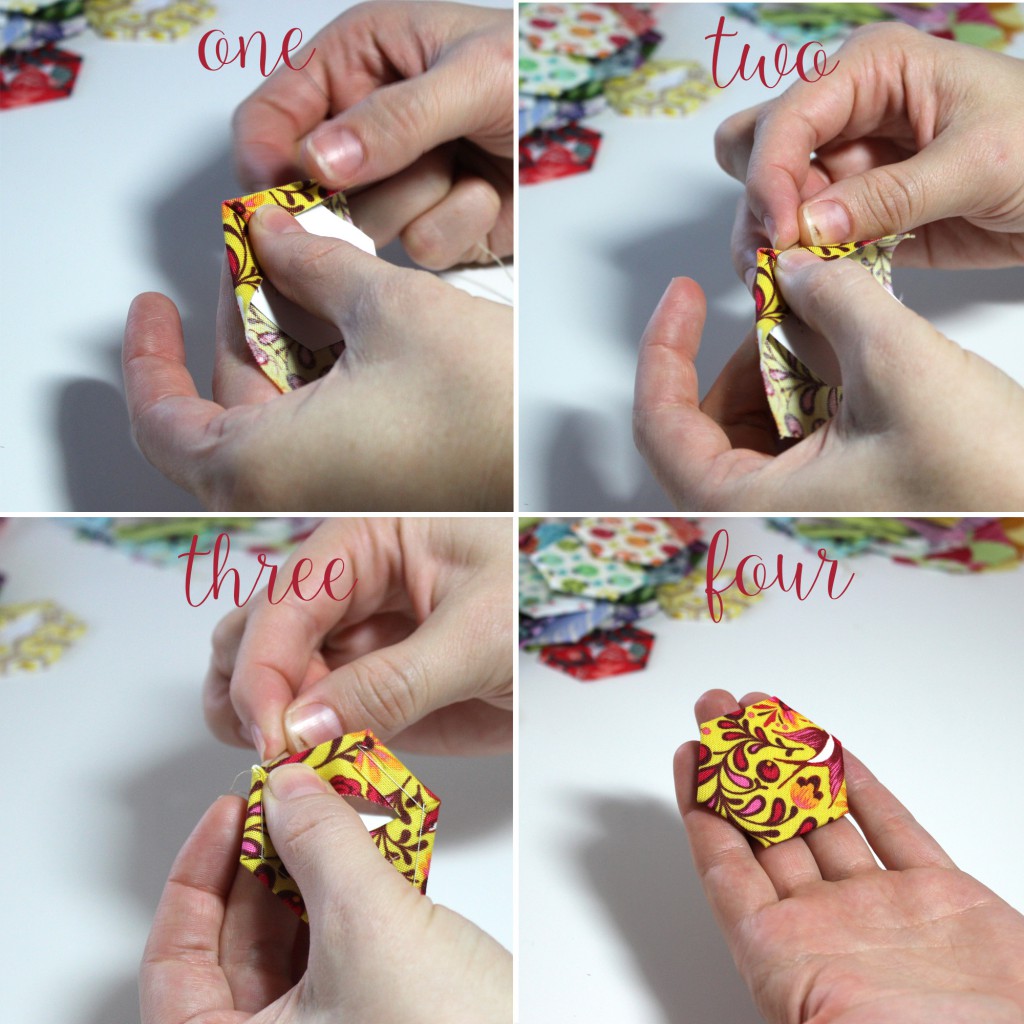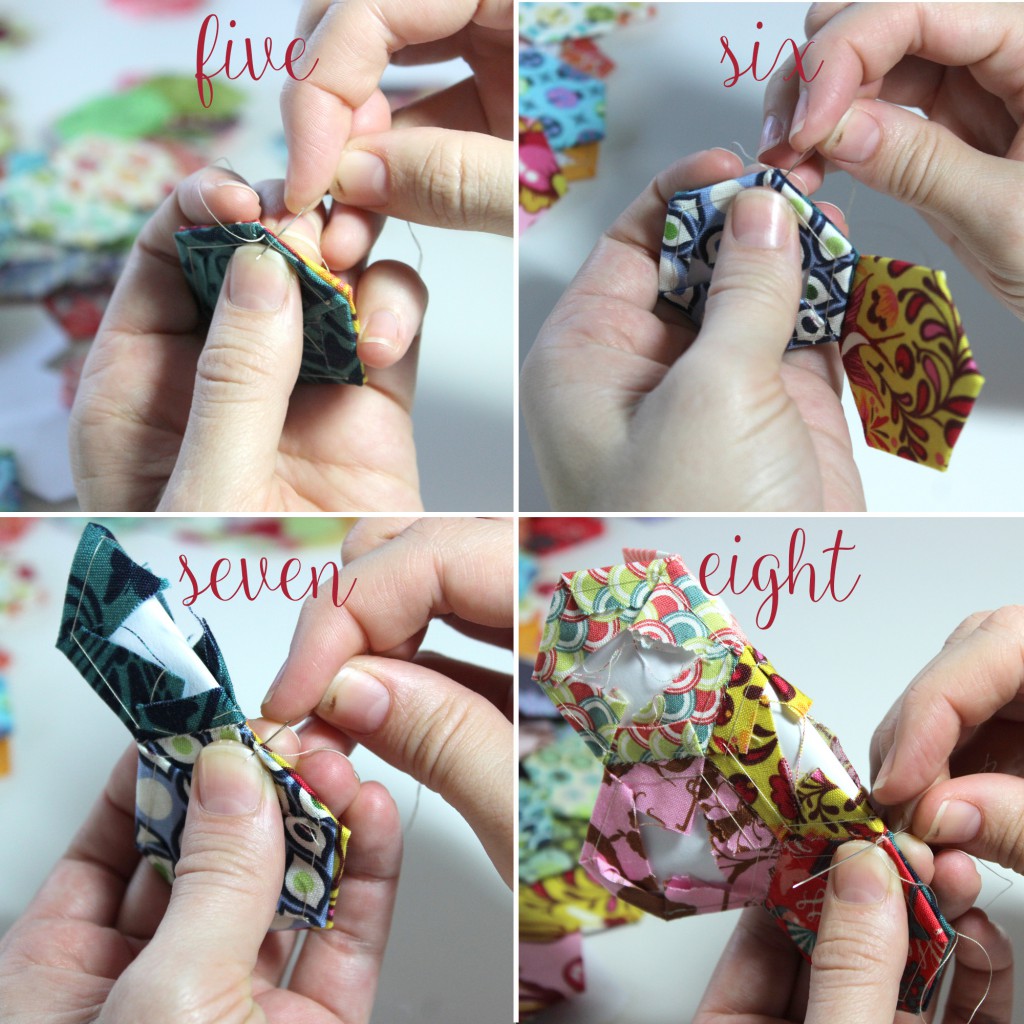Hand piecing is definitely a commitment, but a perfect portable and/or couch project. I love to sew when I am catching up on my stories on the telly. Mostly because if I sit still, I tend to fall asleep. This is a perfect solution if you ask me, so I have put together this tutorial on how to English paper piece.

Back in the day, When quilts were made using the English paper piecing method, the maker would use anything they could get their hand on as the papers. This included cut up sheet music, letters and newspapers. Often, the papers were left in when the tops were finished. Apparently for extra warmth? but that doesn’t really make any sense, because as soon as you washed your quilt, all those papers would disintegrate and go horrible in the quilt. But they were left in and historians have used these paper scraps to date the quilts, so there you go – it was a thing.
These days, we are lucky to have laser cut card stock, which can be used over and over and are cut to precise shapes. And the shapes and sizes you can buy are endless.

How to English paper piece tutorial
Supplies
- 2 1/2 inch squares of fabric
- 1 inch hexagon shape paper pieces
- General hand sewing supplies (such as scissors, hand needles and cotton thread

Instructions
To thread baste the hexagons: Fold the fabric over the first edge of the hexagon paper and hold in place with your thumb. Fold over a second edge, going around in a clock-wise direction. With a needle and thread, make a stitch out of the fabric fold, leaving a small tail of thread. Take a second stitch in the same spot to secure your thread. Fold a third edge over the paper and hold in place with your thumb. Take a bite out of the fabric fold to secure it in place. Continue until all 6 corners are complete. Secure the thread by taking a second stitch in place and cut the end of the thread.

To sew the hexagons together: Place two hexagons right sides together. secure your thread at the corner of the hexagon. Using a ‘whip’ stitch, take small bites of fabric from the folded edge of the hexagons. Your needle should pass through both fabrics, above the paper piece. Each stitch should be around an 1/8 inch apart. If you are making hexagon flowers, sew six hexagons around the middle one. Fold your papers to make life easier as you go around each seam. Once you get to the end of the flower or as your thread runs out, double stitch to secure your thread.
I wouldn’t recommend that you leave your papers in once you have finished piecing your quilt together. You can pop the papers out once the outer edges are secured or appliquéd down – do it before then and you risk undoing the edge seams of your hexagons.
There you go! English paper piecing is pretty easy once you get your fingers and thumbs working together.